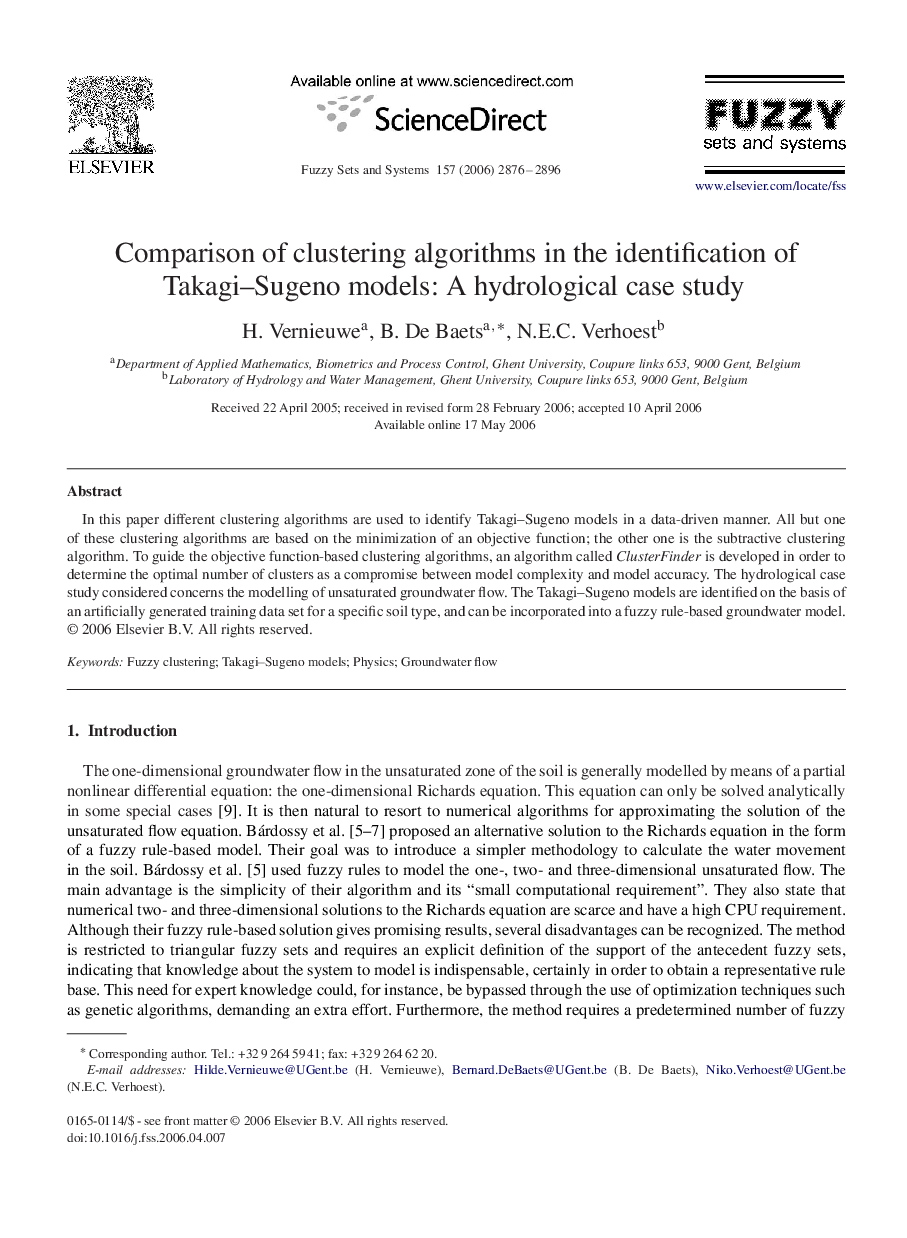| Article ID | Journal | Published Year | Pages | File Type |
|---|---|---|---|---|
| 391188 | Fuzzy Sets and Systems | 2006 | 21 Pages |
In this paper different clustering algorithms are used to identify Takagi–Sugeno models in a data-driven manner. All but one of these clustering algorithms are based on the minimization of an objective function; the other one is the subtractive clustering algorithm. To guide the objective function-based clustering algorithms, an algorithm called ClusterFinder is developed in order to determine the optimal number of clusters as a compromise between model complexity and model accuracy. The hydrological case study considered concerns the modelling of unsaturated groundwater flow. The Takagi–Sugeno models are identified on the basis of an artificially generated training data set for a specific soil type, and can be incorporated into a fuzzy rule-based groundwater model.
